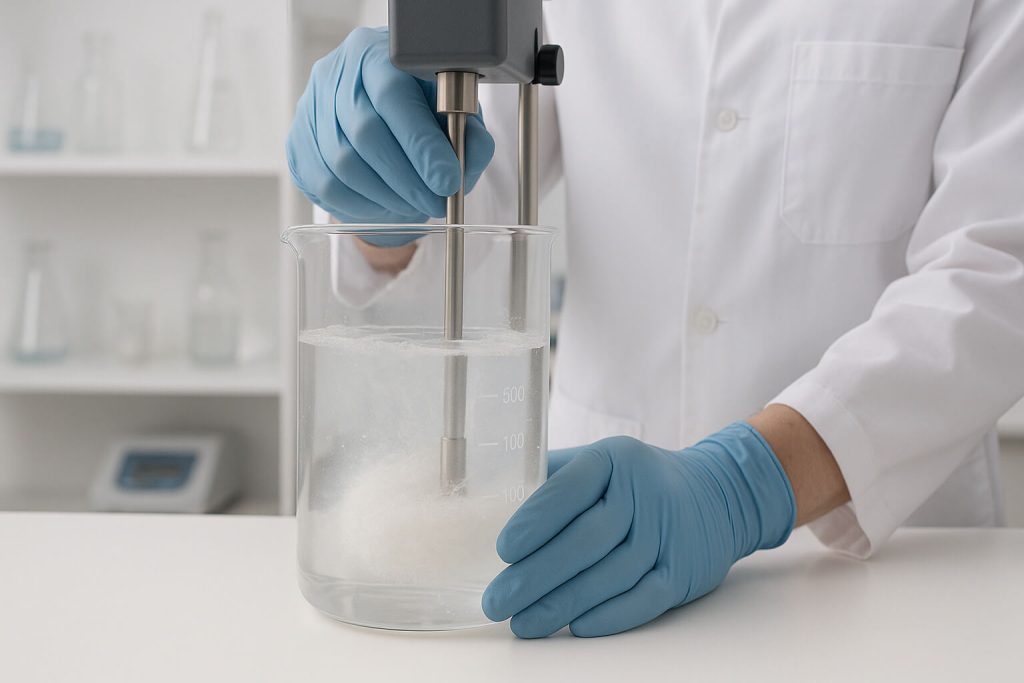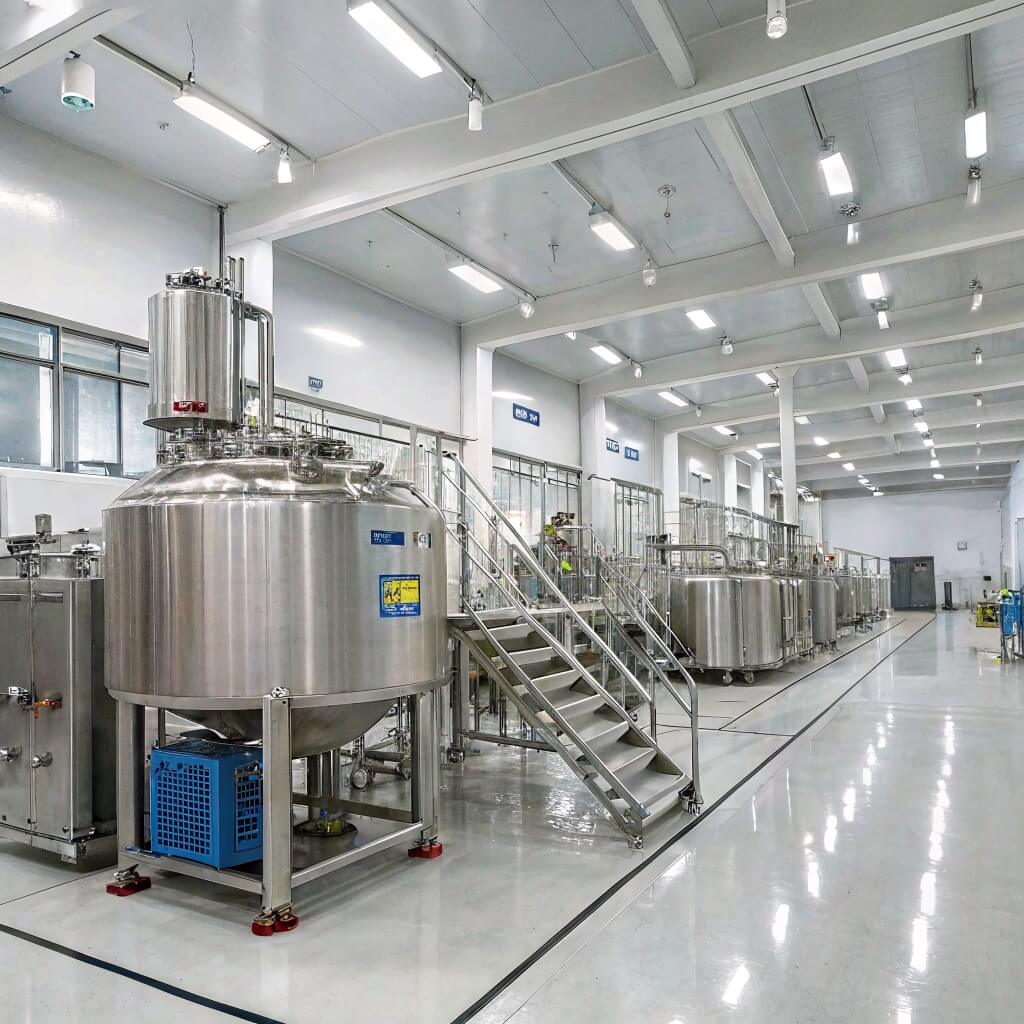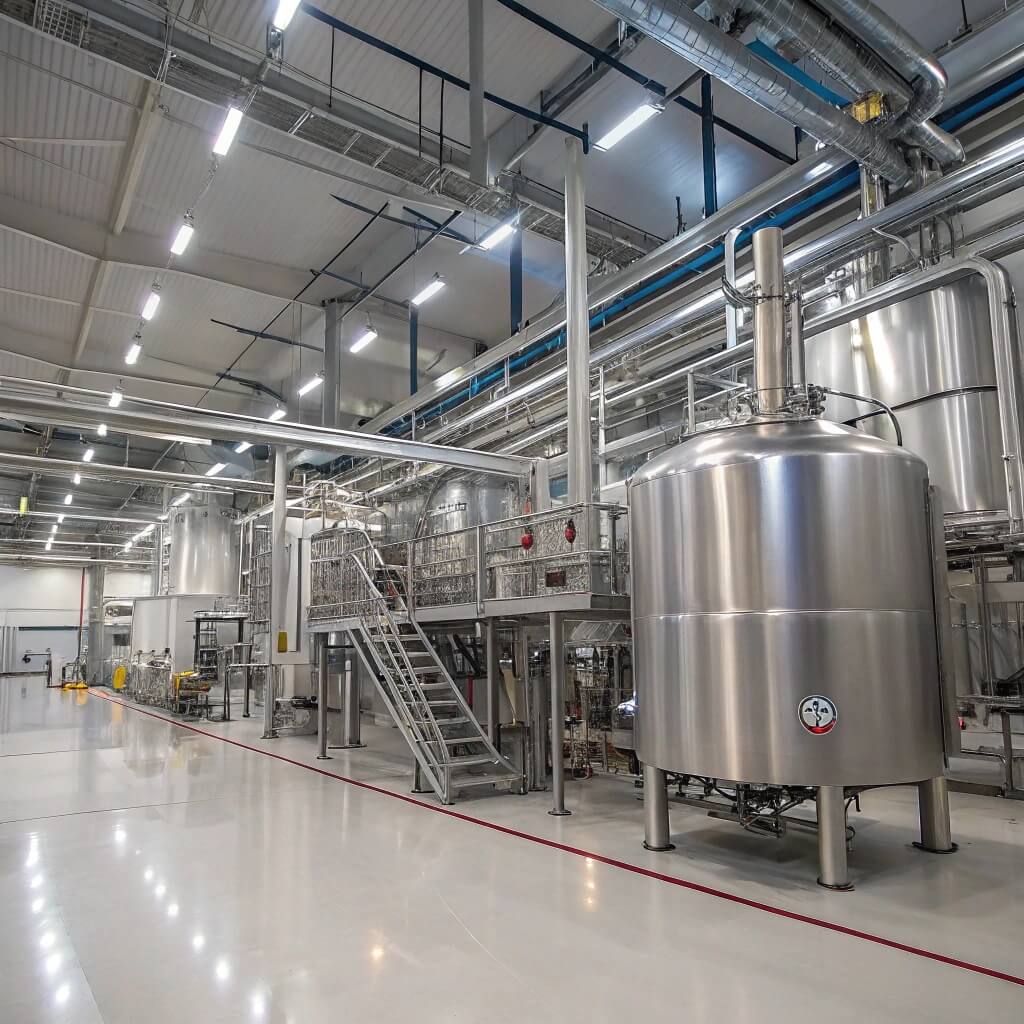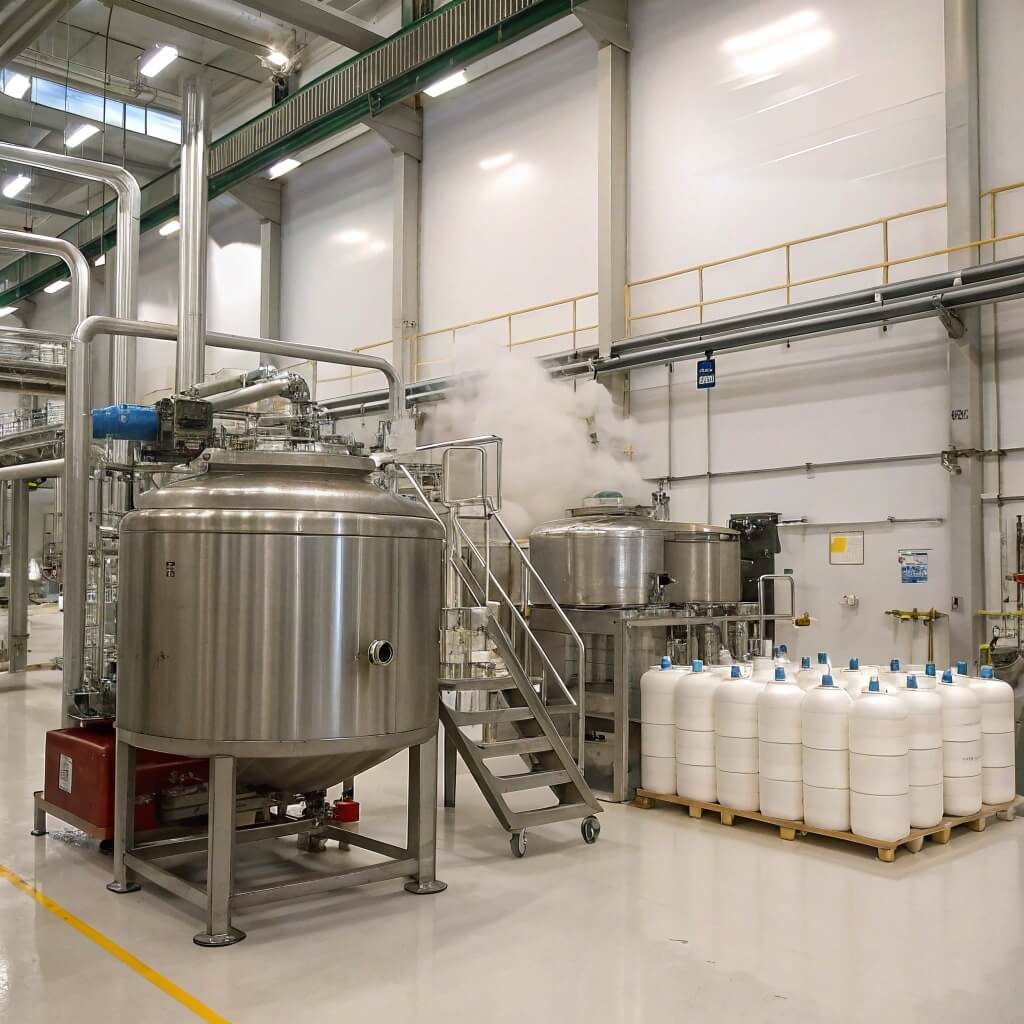Hydroxypropyl Methylcellulose (HPMC) K100LV has emerged as a premier choice in high-performance applications, especially within the pharmaceutical, food, and cosmetic industries. This versatile cellulose-derived polymer is not only effective as a thickening agent but also serves various roles including stabilizer and emulsifier, crucial for achieving desired product characteristics. The objective of this article is to explore the reasons why HPMC K100LV is a preferred material for high-performance applications, its unmatched properties, and the diverse industries that benefit from its use. In doing so, we will address common questions and provide insightful examples that contextualize its significance.

1. What Is HPMC K100LV and Its Importance?
HPMC K100LV is a synthetic polymer derived from cellulose, renowned for its remarkable thickening, binding, and gelling properties. But here’s the kicker: its chemical structure is designed to enhance solubility and viscosity in aqueous solutions, making it a cornerstone in many formulations. The importance of HPMC K100LV can be traced back to its history, which began in the early 20th century when it was first synthesized. Since then, it has gained wide acceptance in various applications, replacing other less efficient agents.
Understanding the chemical makeup of HPMC K100LV provides insight into why it performs exceptionally well. The polymer is partially methylated and hydroxypropylated, giving it unique hydrophilic characteristics. This allows for its effective dissolution in cold water, forming viscous solutions smoothly, without the graininess sometimes seen with other thickeners. Moreover, its ability to interact favorably with a range of ingredients adds to its versatility in formulating products across different sectors.
The practical benefits extend beyond its thickening abilities. HPMC K100LV acts as an excellent stabilizer and provides emulsifying properties that help maintain homogeneity in mixtures, particularly important in food and cosmetic applications where consistency is paramount. As more companies prioritize formulation integrity and quality, the role of HPMC K100LV has only grown, solidifying its importance in high-performance applications.
| Eigentum | Beschreibung |
|---|---|
| Chemische Struktur | Hydroxypropyl methylcellulose |
| Löslichkeit | Excellent solubility in cold water |
| Anwendungsfälle | Pharmaceuticals, food products, cosmetics |
2. Why Do Industries Select HPMC K100LV?
The selection of HPMC K100LV by various industries isn’t a mere coincidence; it’s backed by a plethora of advantages it offers compared to other thickening agents. What’s the real story? One key reason is its superior performance in maintaining texture and viscosity in multiple formulations. The thickening qualities of HPMC K100LV ensure that products remain stable during both storage and use, which is crucial for pharmaceuticals and consumables that require precise dosages.
Pharmaceutical applications, for instance, benefit immensely from HPMC K100LV’s ability to maintain the stability of active ingredients in liquid formulations. When used in oral suspensions, it prevents sedimentation, ensuring that patients receive accurate doses every time. This reliability is one of the main reasons pharmaceutical manufacturers depend on HPMC K100LV.
Furthermore, HPMC K100LV has gained traction in the food industry due to its neutral taste, which allows it to enhance texture without altering flavors. Products like sauces, dressings, and dairy provide opportunities for utilizing HPMC K100LV that satisfy both sensory and functional requirements. For example, in the production of low-fat salad dressings, it is increasingly used to create a creamy texture that consumers expect while reducing fat content.
Lastly, personal care products also benefit from HPMC K100LV, particularly in formulations for lotions and gels, where its emulsion-stabilizing properties are vital. As the demand for high-quality formulations continues to rise, it is clear that HPMC K100LV meets the rigorous demands of diverse industries.
| Industrie | Hauptvorteile |
|---|---|
| Pharmazeutika | Maintains ingredient stability, accurate dosing |
| Lebensmittelindustrie | Enhances texture, neutral taste |
| Körperpflege | Stabilizes emulsions, enhances application |
3. How Does HPMC K100LV Enhance Performance in Formulations?
Understanding the mechanisms through which HPMC K100LV enhances formulation performance is essential for manufacturers aiming to optimize their products. This is where it gets interesting: HPMC K100LV works by significantly increasing viscosity and creating a stable matrix within the formulation. When HPMC K100LV is added to a solution, it interacts with water molecules, swells, and forms a viscous gel that can thicken the liquid and help stabilize emulsions.
One notable example stems from its application in pharmaceuticals, where HPMC K100LV has been used in controlled-release drug formulations. The ability of HPMC K100LV to form a gel creates a barrier that regulates the release of the active ingredient over time, which not only enhances bioavailability but also improves patient compliance. This controlled-release mechanism is vital for medications that require sustained therapeutic effects.
Additionally, in the food industry, HPMC K100LV helps improve the mouthfeel of various products. For instance, in ice creams and frozen desserts, it contributes to a smooth, creamy texture by preventing the formation of ice crystals during storage. This quality ensures that end consumers enjoy a consistent and delightful experience, vital for brand loyalty and product repeat purchases.
In cosmetics, HPMC K100LV contributes to the texture and application ease of creams and lotions. Its presence aids in avoiding separation of oil and water, thereby extending the shelf life of the product while ensuring a pleasant user experience. The combination of these effects showcases how HPMC K100LV enhances performance across numerous formulations, highlighting its significance in high-performance applications.
| Anwendung | Benefit of HPMC K100LV |
|---|---|
| Controlled-Release Medications | Regulates active ingredient release |
| Frozen Desserts | Improves consistency, prevents ice crystal formation |
| Cosmetic Formulations | Ensures even texture and product stability |
4. What Are the Applications of HPMC K100LV in Different Sectors?
HPMC K100LV spans a wide variety of applications across multiple sectors, reflecting its adaptability and functionality. Ready for the good part? In the pharmaceutical industry, HPMC K100LV serves as a key excipient in tablet and capsule formulations where it contributes to binding and coating, enabling drug release with precision. It is common to find HPMC K100LV in extended-release formulations, where it plays a critical role in controlling the dispersion of active ingredients over time, thus improving therapeutic effectiveness.
In the food sector, HPMC K100LV is a favorite ingredient in formulations for sauces, dressings, and bakery products. It provides not only thickening capabilities but also acts as a stabilizer that prevents the separation of oil and water phases in emulsions. A classic example is its use in creamy salad dressings, where HPMC K100LV helps achieve the desired viscosity while maintaining the product’s sensory properties.
Moving into the personal care domain, HPMC K100LV finds itself in numerous cosmetic products like lotions, gels, and creams. It enhances texture and stability, enabling emulsions to remain uniformly mixed over time. This is especially significant in sunblocks and moisturizers, where users expect consistent application without separation.
Overall, HPMC K100LV is pivotal in creating value in product development across these sectors. Its diverse applications underscore its importance and demonstrate how it meets varying consumer demands, positioning it as an essential ingredient in high-performance formulations.
| Sector | Applications of HPMC K100LV |
|---|---|
| Pharmazeutika | Tablets, capsules, controlled-release meds |
| Lebensmittelindustrie | Sauces, dressings, bakery products |
| Körperpflege | Lotions, gels, creams |
5. What Are the Advantages of HPMC K100LV Over Other Agents?
When it comes to choosing the right thickening or stabilizing agent, various factors come into play, particularly performance, safety, and cost-efficiency. What’s the real story? HPMC K100LV stands out against its competitors for several reasons. One of the most significant advantages is its safety profile. It is non-toxic and does not pose health risks when used in food and pharmaceuticals, making it a reliable choice for producers committed to quality and safety.
In comparison to natural alternatives like xanthan gum or guar gum, HPMC K100LV provides more consistent results in terms of viscosity across varying temperatures and pH levels. This stability ensures that products perform uniformly throughout their shelf life, which is crucial for consumer satisfaction and brand trust.
Moreover, HPMC K100LV is highly versatile and can be used successfully in various formulations—from low-fat foods that rely on it for texture to pharmaceutical tablets that need controlled release. This adaptability translates into lower production costs for manufacturers, as they can consolidate multiple formulations using one ingredient.
HPMC K100LV’s performance is not only effective but also efficient, allowing manufacturers to attain the desired consistency with smaller quantities compared to other thickening agents. This reduces waste and provides economic benefits, especially when scaling production. All these advantages contribute to its rising popularity and integration in high-performance formulations across various industries.
| Comparison Factor | HPMC K100LV | Andere Agenten |
|---|---|---|
| Sicherheitsprofil | Non-toxic and reliable | May contain allergens |
| Konsistenz | Provides stable viscosity across variations | Varied performance |
| Cost-Efficiency | Requires lower quantities | Typically needs more volume |
6. How Is HPMC K100LV Manufactured?
Manufacturing HPMC K100LV is a specialized process that combines chemical engineering with agricultural products. This is where it gets interesting: the process begins with sourcing high-quality cellulose, primarily derived from plant cellulose like wood pulp or cotton. Once the cellulose has been thoroughly purified, it undergoes a chemical reaction known as etherification.
During etherification, cellulose is treated with an alkaline solution along with hydroxypropyl and methyl groups. This step modifies the cellulose structure, allowing it to dissolve in water and form viscous solutions. The degree of substitution defines the properties of HPMC, such as viscosity and solubility, making this step critical for achieving the desired specifications.
After etherification, the HPMC undergoes purification and drying processes to achieve a powder consistency. This drying step is crucial, as it ensures that the HPMC retains its functional properties without clumping. Quality control checks are performed throughout the manufacturing process, including evaluating viscosity levels and ensuring product consistency.
Manufacturers also adhere to Good Manufacturing Practices (GMP) to ensure that the final product maintains purity and quality. This commitment to high standards not only guarantees the safety of HPMC K100LV but also addresses concerns from industries where compliance with regulations is critical.
| Fertigungsschritt | Beschreibung |
|---|---|
| Zellulosereinigung | Sourcing and purifying plant cellulose |
| Veretherung | Introducing hydroxypropyl and methyl groups |
| Qualitätskontrolle | Ensuring consistent viscosity and purity |
7. What Are the Typical Formulations that Use HPMC K100LV?
The versatility of HPMC K100LV leads to its use in a wide array of formulations spanning across multiple industries. Ready for the good part? In the pharmaceutical sector, HPMC K100LV is typically found in products like oral suspensions, tablets, and topical creams. It acts as a binding agent and thickener, ensuring that active ingredients remain evenly distributed and available for absorption in the body.
In the food industry, HPMC K100LV is frequently incorporated into sauces, dressings, and baked goods. For instance, it is used in tomato sauces to provide the desired thickness while avoiding separation. In low-fat yogurt, it serves to maintain a creamy texture, improving overall mouthfeel without the use of excess fat.
Cosmetics also extensively use HPMC K100LV in formulations such as moisturizers, creams, and gels. A common application is in sunblock lotions, where it aids in achieving a stable emulsion while ensuring even application on skin. This functionality is crucial for products that demand thickening properties without compromising the clarity or appearance of the formulation.
These examples highlight the diverse applications and benefits of HPMC K100LV, showcasing why it is an essential ingredient in various product categories. Its multipurpose nature not only simplifies formulation processes but also meets consumer expectations for quality and performance.
| Formulierungstyp | HPMC K100LV’s Role |
|---|---|
| Pharmazeutika | Tablet binding and thickening |
| Nahrungsmittel | Thickening agents in sauces and dressings |
| Kosmetika | Stabilizes emulsions in creams and lotions |
8. How Can Companies Optimize the Use of HPMC K100LV?
To fully leverage the benefits of HPMC K100LV, companies must adopt effective strategies during the formulation process. What’s the real story? First and foremost, selecting the correct grade of HPMC K100LV is critical. Different grades possess varying viscosity profiles, and understanding which one fits a specific application can significantly impact performance.
Next, optimization begins with thorough prehydration. Allowing HPMC K100LV to hydrate properly before incorporating it into formulations is essential for achieving desired viscosities without clumping. Proper mixing techniques can help ensure an even distribution of the thickener and improve the formulation’s overall effectiveness.
Continuous testing and formulation trials are also essential. Manufacturers should routinely evaluate their formulations to assess viscosity, stability, and the efficacy of HPMC K100LV in achieving desired results. Fine-tuning concentrations based on testing can lead to optimal performance across different applications.
Furthermore, maintaining open lines of communication with suppliers can provide valuable insights and resources. Engaging with suppliers who specialize in HPMC can lead to improved formulations and innovative uses of the thickening agent, ensuring that companies are harnessing the full potential of HPMC K100LV.
By following these best practices, companies can ensure that they are fully optimizing the use of HPMC K100LV, paving the path for successful high-performance applications and improved product quality.
| Bewährte Vorgehensweise | Beschreibung |
|---|---|
| Sortenauswahl | Choose the right grade for specific applications |
| Vorhydratation | Allow thorough hydration before use |
| Continuous Testing | Assess formulation performance consistently |
9. What Trends Are Shaping the Use of HPMC K100LV?
As industries evolve, several trends are influencing the demand for HPMC K100LV, redefining its applications and importance. This is where it gets interesting: the rise in consumer demand for natural and clean-label products is a primary driver. As consumers become more health-conscious, companies are increasingly sourcing ingredients like HPMC K100LV, which is derived from cellulose and considered safe for use.
Sustainability is another significant trend impacting HPMC K100LV’s popularity. With an increased focus on minimizing environmental impacts, industries are gravitating towards biodegradable and eco-friendly options. HPMC K100LV aligns perfectly with these values, enhancing its appeal as a suitable ingredient for formulations aiming for sustainability.
Technological advancements also play a pivotal role in shaping the use of HPMC K100LV. Innovations in processing techniques and formulation development are opening doors for new applications, enhancing product performance in pharmaceuticals and food industries. The ability to create highly effective controlled-release formulations exemplifies the potential for new and improved products using HPMC K100LV.
As businesses adapt to these prevailing trends and consumer expectations, HPMC K100LV stands at the forefront, offering solutions to meet evolving marketplace demands while ensuring product integrity.
| Trend | Impact on HPMC K100LV Usage |
|---|---|
| Demand for Natural Products | Increases use in clean-label formulations |
| Nachhaltigkeit | Drives preference for biodegradable ingredients |
| Technologische Fortschritte | Fosters innovation in applications |
10. Where Can Companies Source High-Quality HPMC K100LV?
Sourcing high-quality HPMC K100LV is critical for companies focused on maintaining product integrity and compliance with industry standards. What’s the real story? The first step is identifying suppliers that adhere to Good Manufacturing Practices (GMP). This ensures that the HPMC K100LV produced maintains high purity and quality standards, which is essential for end applications.
Evaluating the supplier’s reputation is vital. Companies should look for suppliers with a track record of reliability, product consistency, and timely delivery. It’s beneficial to consult available customer reviews and case studies to gauge supplier reliability and effectiveness.
Technical support is another key consideration. Companies should seek suppliers who provide assistance and guidance through the formulation process. This not only improves product development but can also lead to innovative application ideas that fully leverage HPMC K100LV’s properties.
Finally, attending industry trade shows or expos can provide valuable opportunities to connect with potential suppliers and gain insights into the latest developments in HPMC K100LV. These events often highlight innovations and new applications that can benefit manufacturers seeking to optimize their formulations.
By following these strategies, companies can ensure they find reliable sources of HPMC K100LV, ultimately enhancing their product quality and market competitiveness.
| Sourcing Factor | Beschreibung |
|---|---|
| Compliance with GMP | Ensures product safety and quality |
| Lieferantenzuverlässigkeit | Evaluation of performance and delivery |
| Technische Unterstützung | Assistance offered during formulation processes |
FAQ-Bereich
Frage 1: What is HPMC K100LV?
HPMC K100LV is a water-soluble polymer derived from cellulose, widely used as a thickening, binding, and stabilizing agent across various industries, including pharmaceuticals and food.
Frage 2: How does HPMC K100LV work in formulations?
HPMC K100LV works by forming a viscous gel when added to water, enhancing the texture and stability of formulations while preventing ingredient separation.
Frage 3: What industries utilize HPMC K100LV?
HPMC K100LV is utilized in pharmaceuticals, food production, and personal care to provide thickening and stabilizing qualities essential for product performance.
Frage 4: How is HPMC K100LV manufactured?
HPMC K100LV is manufactured through the etherification of cellulose, where it is modified chemically to improve its solubility and properties for various applications.
F5: Why is HPMC K100LV preferred over other thickening agents?
HPMC K100LV is preferred due to its non-toxic nature, versatility, stability across formulations, and economic benefits, making it suitable for a variety of applications.




